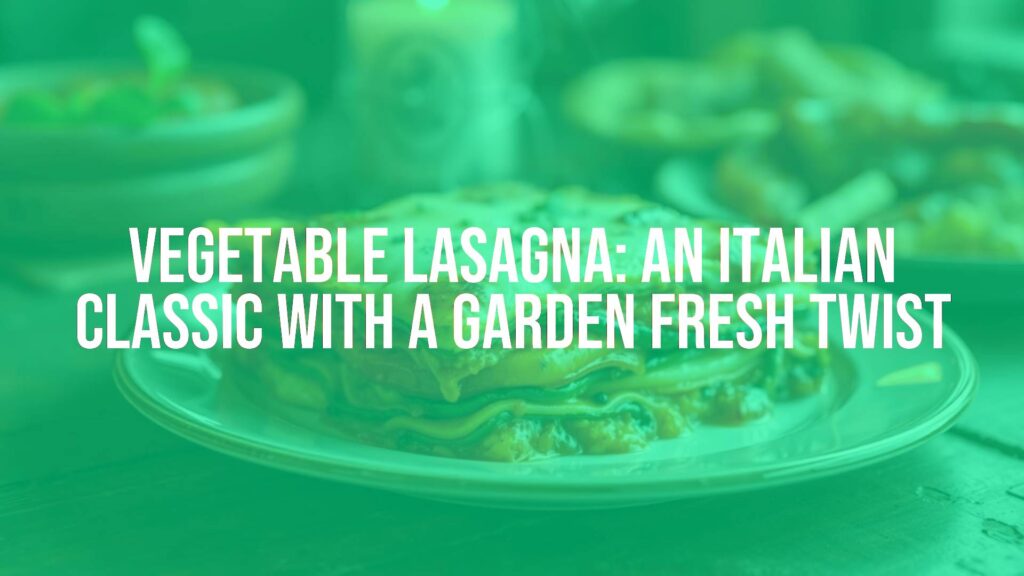Understanding Vegetable Lasagna
Vegetable lasagna reimagines the beloved Italian layered pasta dish by swapping traditional meat fillings for a vibrant medley of vegetables. This version showcases Italy’s deep appreciation for seasonal produce, offering a satisfying, nutritious, and multifaceted experience that’s distinct from its meat-laden cousin. With layers of tender pasta, rich sauces, cheeses, and colorful vegetables, vegetable lasagna is celebrated for its heartiness and versatility.
Key Features and Characteristics
At its core, vegetable lasagna is characterized by its careful layering of pasta sheets with a variety of cooked or roasted vegetables, enveloped in creamy béchamel or tangy tomato sauce, and finished with a generous sprinkling of cheeses such as mozzarella, ricotta, and Parmigiano-Reggiano. The result is a dish with a harmonious blend of flavors and textures — soft pasta, succulent vegetables, and gooey, golden cheese.
The choice of vegetables often highlights what is in season, ranging from zucchini, spinach, and bell peppers to eggplant, carrots, and mushrooms. The unique interplay of these ingredients yields a visually appealing dish, each slice revealing colorful strata.
Origins and Historical Context
While classic lasagna has deep roots in the region of Emilia-Romagna, particularly Bologna, the concept of a vegetable-focused lasagna is a relatively recent adaptation. It gained prominence in response to the growing demand for lighter, vegetarian-friendly options both in Italy and internationally. Despite its modern twist, vegetable lasagna upholds the fundamental principles of Italian home cooking: an emphasis on quality ingredients, balanced flavors, and convivial dining.
Vegetable lasagna is now enjoyed throughout Italy, though it is not attributed to a specific region. It is particularly popular during spring and summer, coinciding with the harvest of fresh vegetables.
Essential Ingredients
The heart of vegetable lasagna lies in its use of garden-fresh vegetables. Common selections include zucchini, spinach, eggplant, onions, mushrooms, bell peppers, carrots, and even artichokes. Each vegetable is usually sautéed, roasted, or grilled to release sugars and intensify flavor before being layered.
Typical components also include:
- Pasta sheets (either fresh or dry, sometimes whole-wheat or egg-free)
- Béchamel sauce (for creaminess, particularly in northern variants)
- Tomato sauce (providing bright acidity and moisture)
- Cheeses (ricotta, mozzarella, Parmigiano-Reggiano, and sometimes provolone)
- Fresh herbs such as basil, oregano, and parsley
Regional Influence and Interpretation
Although not bound to a single Italian region, vegetable lasagna reflects local produce and culinary techniques wherever it’s prepared. In the north, béchamel-based lasagnas are more prevalent, highlighting creamy richness. Southern Italian renditions often lean into vibrant tomato sauces and might include more robust vegetables like eggplant and artichoke, inspired by local traditions.
Variations and Adaptations
The adaptability of vegetable lasagna means cooks can easily tailor it to taste or dietary needs. Common variations include:
- Vegan versions, omitting dairy in favor of plant-based cheeses and sauces
- Gluten-free options, using gluten-free pasta sheets or layers of grilled vegetables
- White lasagna variants, which skip tomato sauce in favor of béchamel and extra cheese
- Regional favorites like pesto lasagna, popular in Liguria, incorporating herby sauces and seasonal greens
Ingredient substitutions might include swapping ricotta for cottage cheese or using squash instead of zucchini during autumn months. The flexibility of the dish makes it accessible for various palates and dietary approaches.
Serving Suggestions and Pairings
Vegetable lasagna is typically served as a main course, often accompanied by a crisp green salad dressed with olive oil and vinegar. For a truly Italian meal, consider starting with antipasti of marinated vegetables or bruschetta.
When it comes to beverage pairings, a medium-bodied red wine such as Chianti or Montepulciano d’Abruzzo complements the earthy flavors of the vegetables and the creaminess of the cheese. For white wine enthusiasts, a chilled Vermentino or Soave also pairs delightfully.
Whether served freshly baked or enjoyed as leftovers (which some say are even tastier), vegetable lasagna brings together the warmth of home-style Italian cooking with the freshness of the Mediterranean garden.

